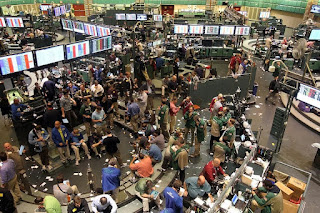AI Models For Investing: Lessons From Petroleum (And Edgar Allan Poe)

 |
| AI Models For Investing: Lessons From Petroleum (And Edgar Allan Poe) |
A decade ago, at a NY conference, an analyst put up slides showing his model of the short-term oil price (variables like inventories, production and demand trends, and so forth). I turned to the colleague next to me and said, “I just want to ask him, ‘How old are you?’” I worked on a computer model of the world oil market from 1977, when the model was run from a remote terminal and the output had to be picked up on the other side of campus. (Yes, by dinosaurs.) Although I haven’t done formal modeling in recent years, my experiences might provide some insight into the current fashion for using computer models in investing (among other things).
About two centuries ago, Baron von Maelzel toured the U.S. with an amazing clockwork automaton (invented by Baron Kempelen), a chess-playing “Turk” in the form of a mannequin at a desk with a chess board. The mannequin was dressed up as a Turk, given perceptions at the time of their perceived superior wisdom. The automaton could not only play chess very well, but solve problems presented to it that experts found difficult. Viewers were amazed, given the complexity of chess, and the level of play was not matched by modern computers for nearly two centuries. None of the Turk’s observers could initially explain the mechanism by which such feats were performed.
This is reminiscent of the 1970s when Uri Geller made claims to have paranormal abilities, which physicists from SRI found they could not explain. Because he wasn’t committing acts of physics, but sleight of hand, as demonstrated by the Amazing Randi who was not a scientist but rather an expert in the latter craft. (Similarly, peak oil advocates are often amazed at techniques done by scientists that are actually statistical in nature—and done wrong.)
Edgar Allan Poe considered the case and proved to be the Amazing Randi of his day. The chess-playing Turk was the result of “the wonderful mechanical genius of Baron Kempelen [that] could invent the necessary means for shutting a door or slipping aside a panel with a human agent too at his service...” in Poe’s words. He noted that the Baron would open one panel on the desk, show no one behind it, close it and open the other, again revealing no human agent; but this is just a standard magician’s trick, where the subject simply moves from one side to the other. Indeed, others claimed to have seen a chess player exit the desk after the audience had left.
Computer models often fall into this category. No matter how scientific and objective they appear, there is always a human agent behind them. In oil market modeling in the 1970s, this took the form of the price mechanism. NYU Professor Dermot Gately had suggested that prices moved according to capacity utilization in OPEC, as in the following figure (later used by the Energy Information Administration, among many others). If utilization was above 80%, prices would rise sharply, below 80% they would taper off.
This made sense, given that many industries use a similar conceptual model to predict inflation: high utilization in the steel industry results in higher steel prices, etc. And the model certainly seems to fit the existing data.
At least until 1986. After 1985, the data points no longer fit the curve, and the EIA stopped publishing the figure after 1987; for the last two years the model was well off. Subsequently, EIA ceased to publish the figure, although they used the formula for some time to come.
